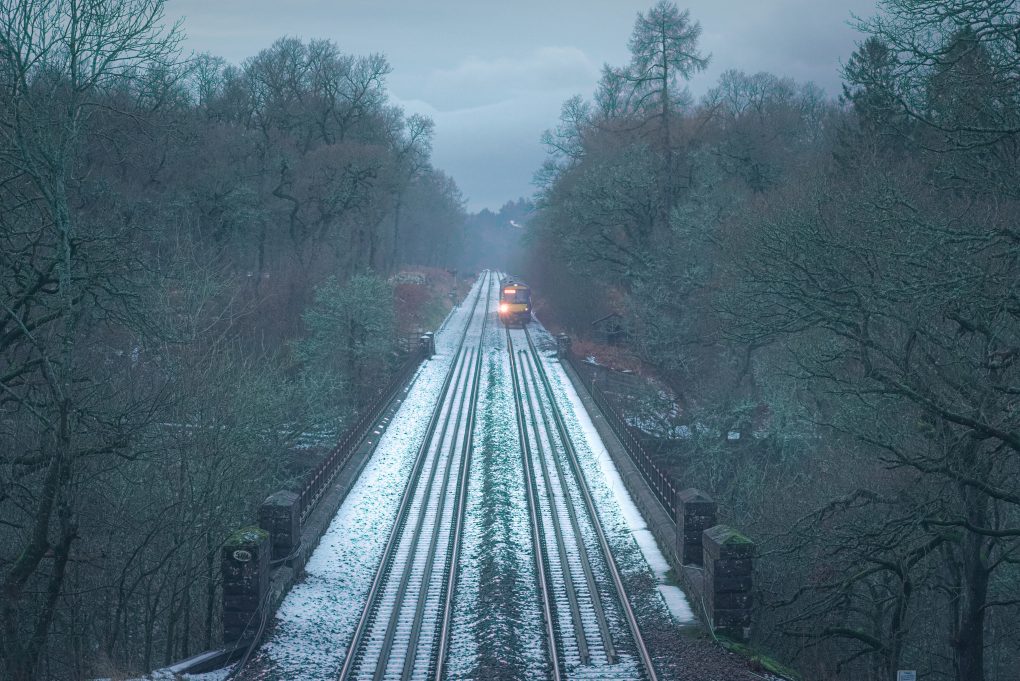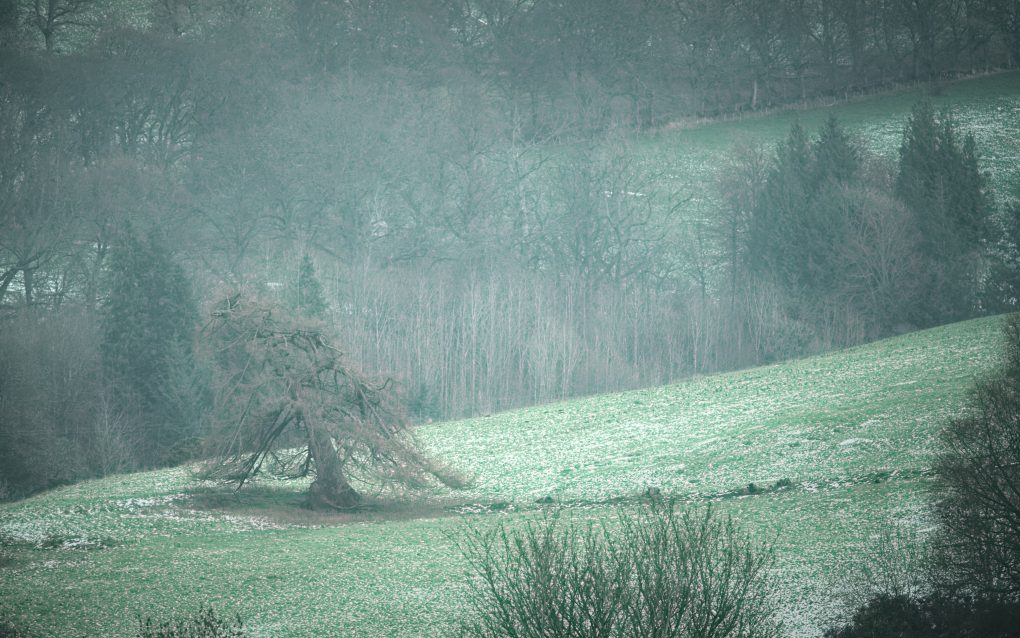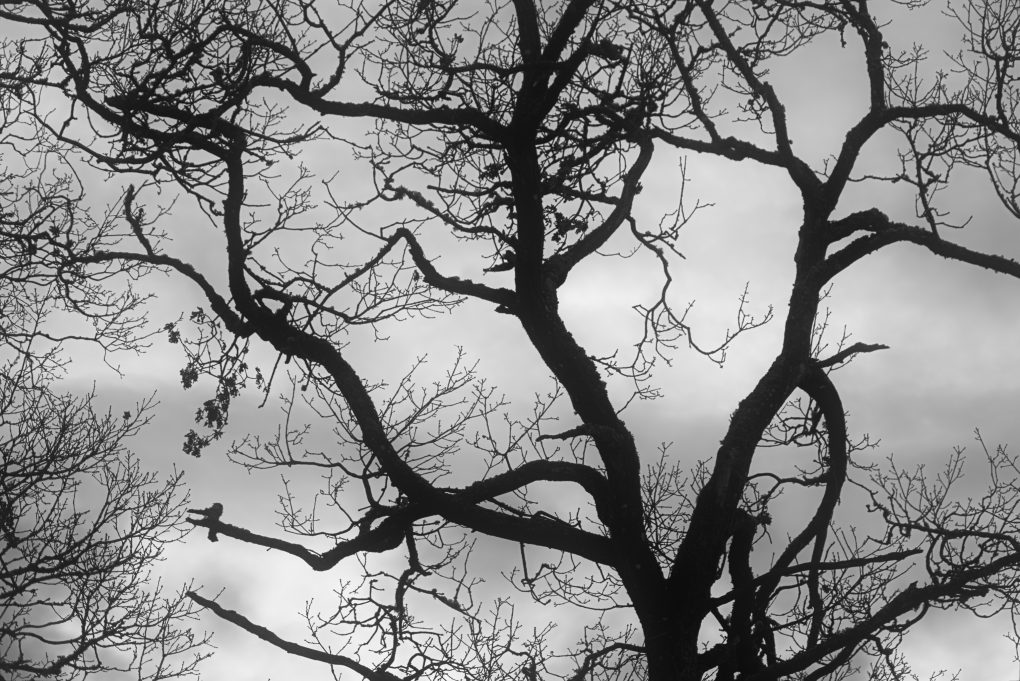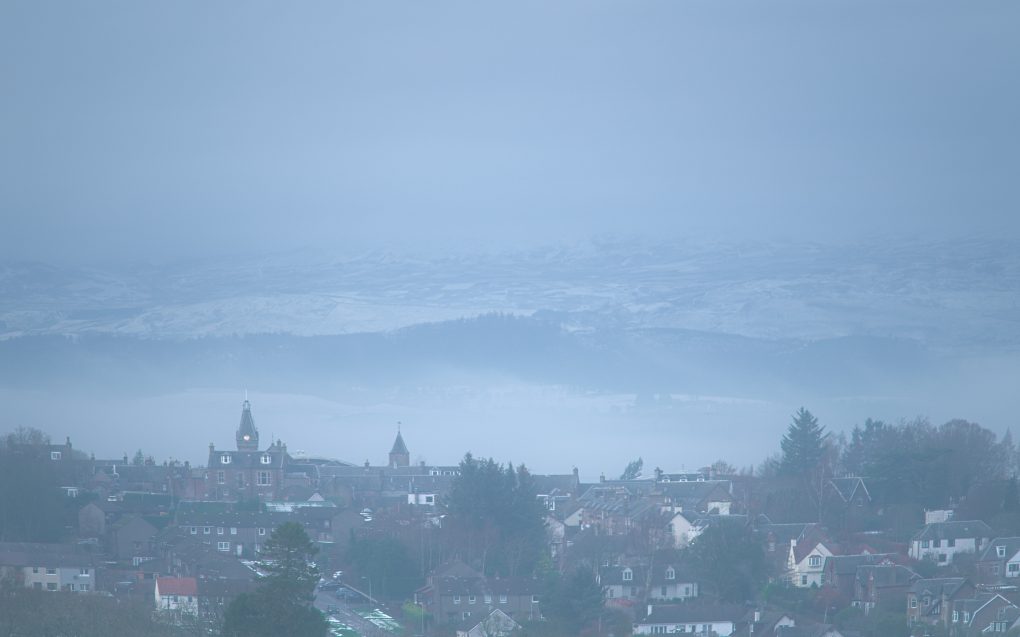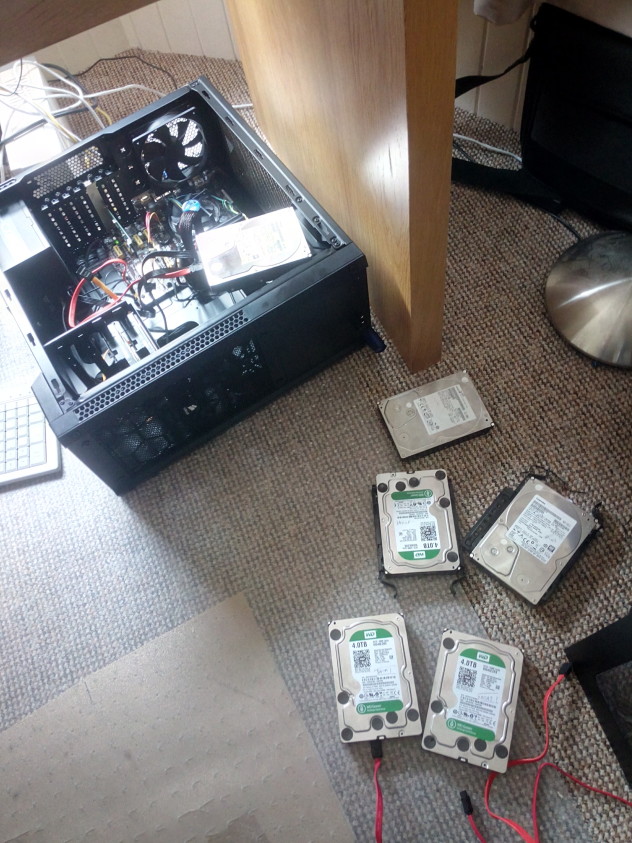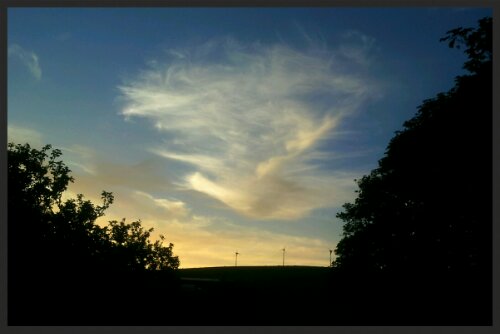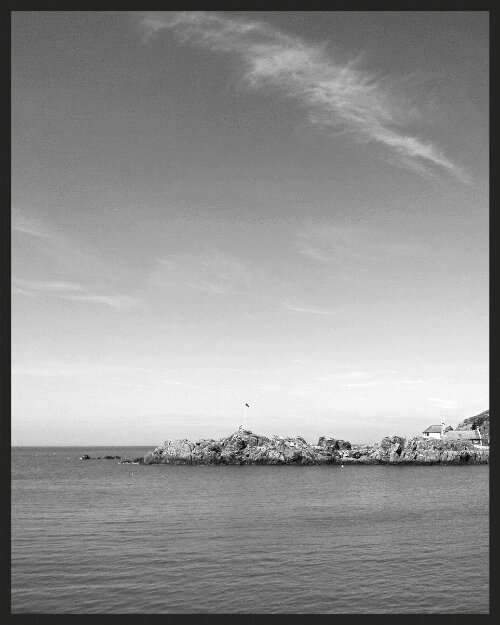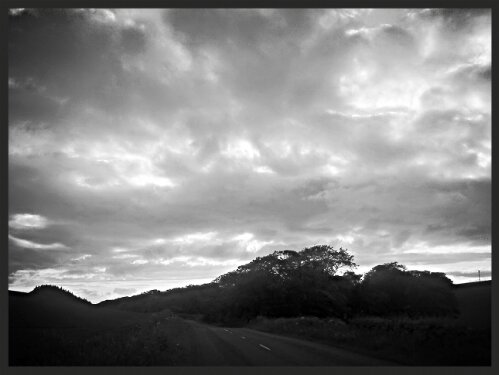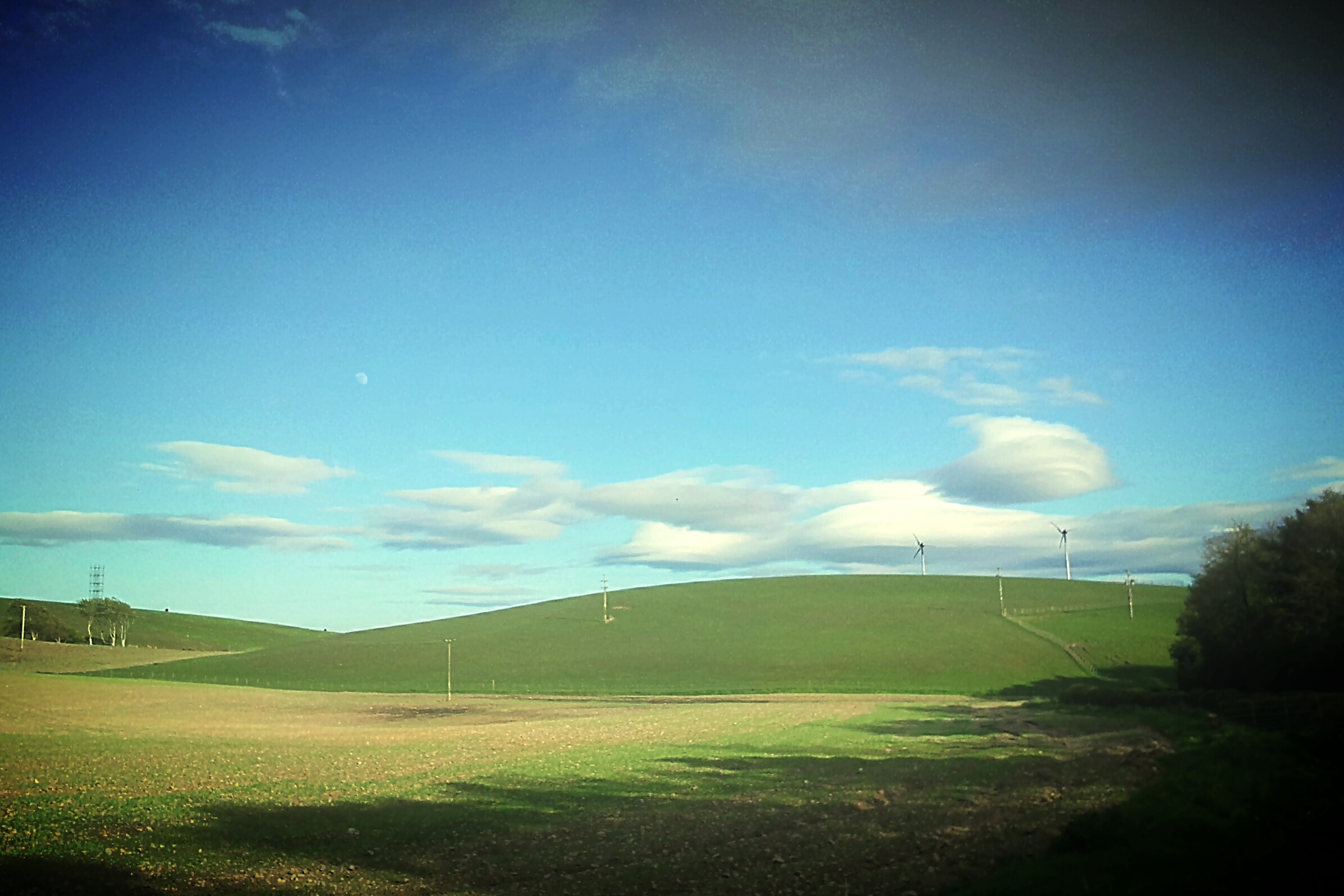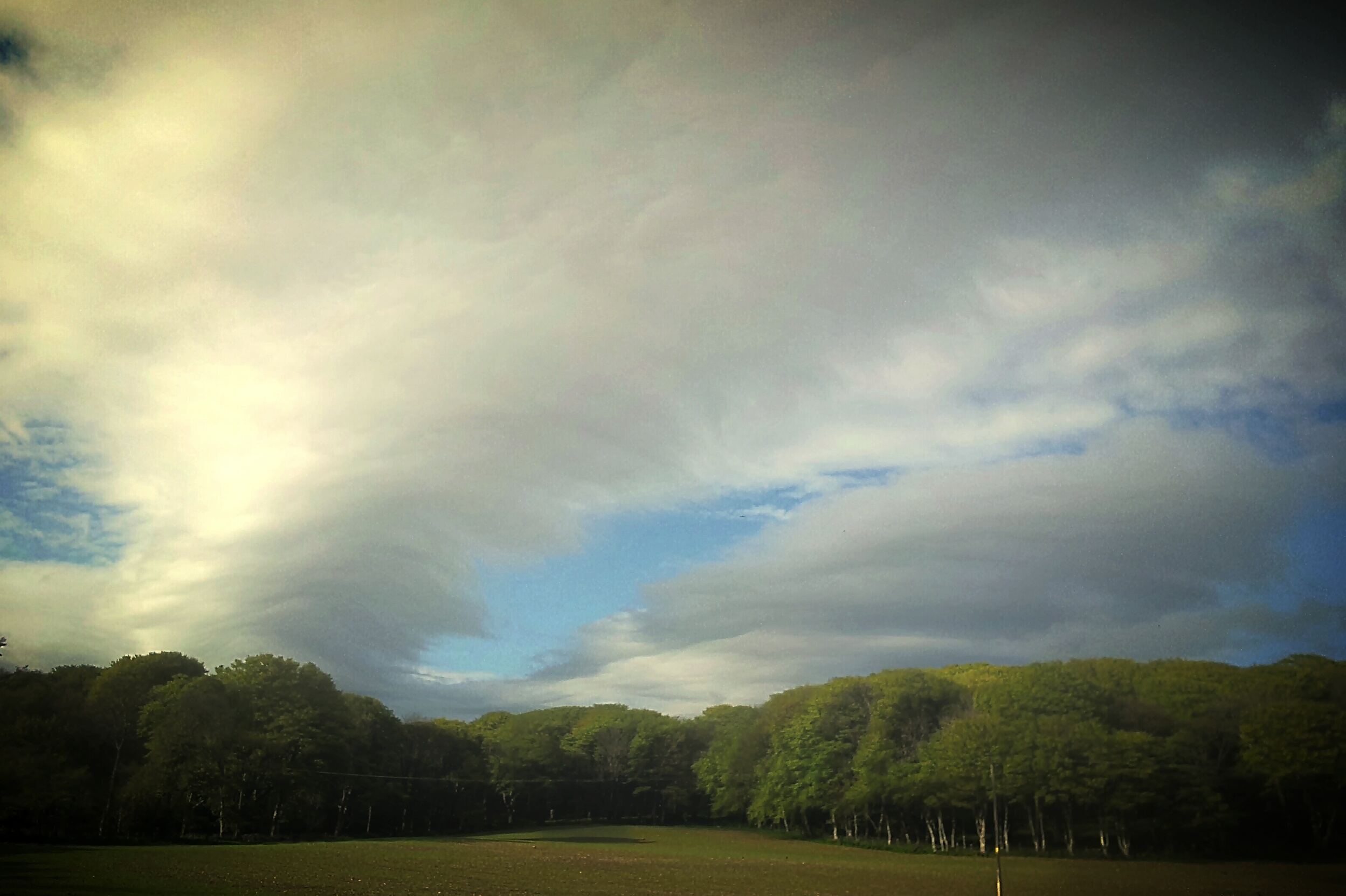A handful of photos from walking the dog one afternoon – stark trees, mist, low clouds, distant hills: Perthshire landscape at its autumnal moodiest.
Tag Archives: cloud
Craig Varr: Misty Landscape
Saturday was one of those strange days where the weather forecast changed, leaving me not particularly inspired where to go take the camera. But I carried on regardless up to Kinloch Rannoch and climbed Craig Varr. The views on the way up were pleasant: nice trees silhouetted against the sky, views along Loch Rannoch; as I reached the top of the crag, however, the mist came down reducing visibility to barely 100yd with low cloud flowing over the trees in front.
Descending, below the cloud level, I could see clouds zipping along above Loch Rannoch like a steam-train, the mountains opposite appearing and receding in the mist.
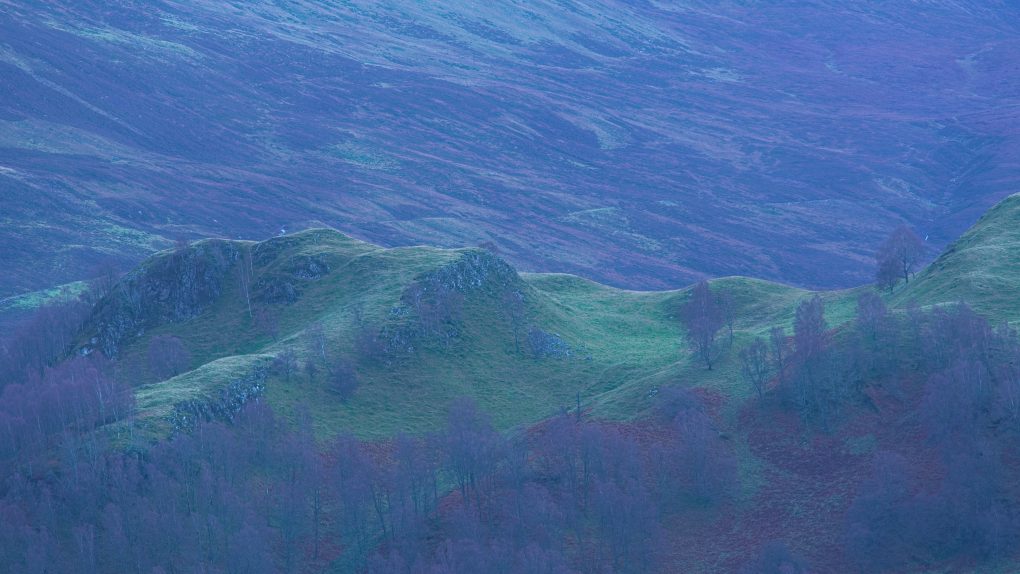
Sparse trees on Creag an Fhithirich, better known as the Sleeping Giant: a beautiful lumpy shapely crag in the foreground before Meall Dearg across the valley from Craig Varr. 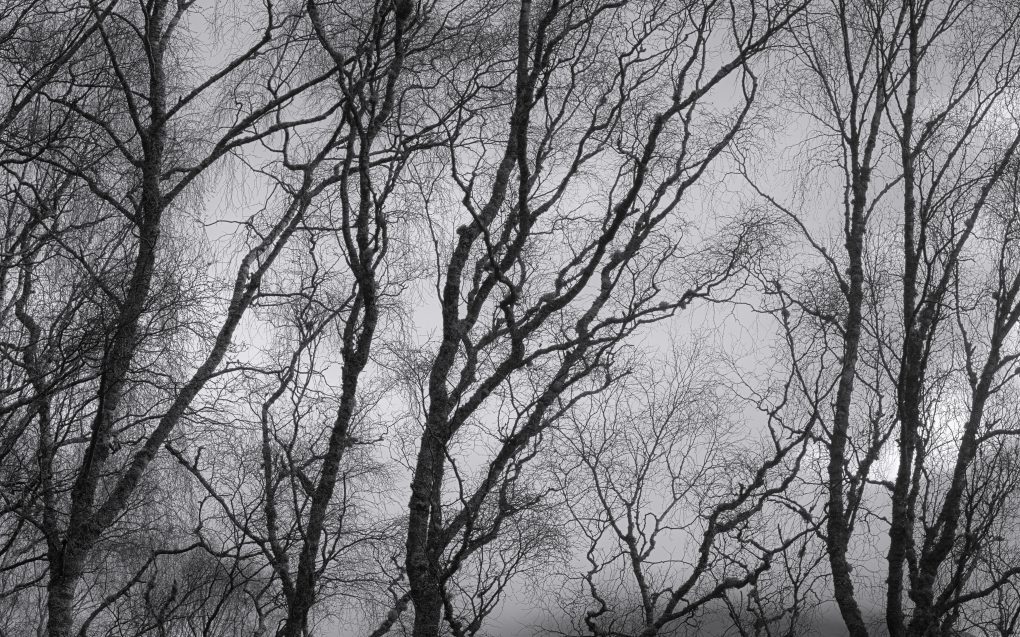
Simple things: abstract shapes of tree branches and twigs forming a fine filigree silhouetted against the sky beyond. 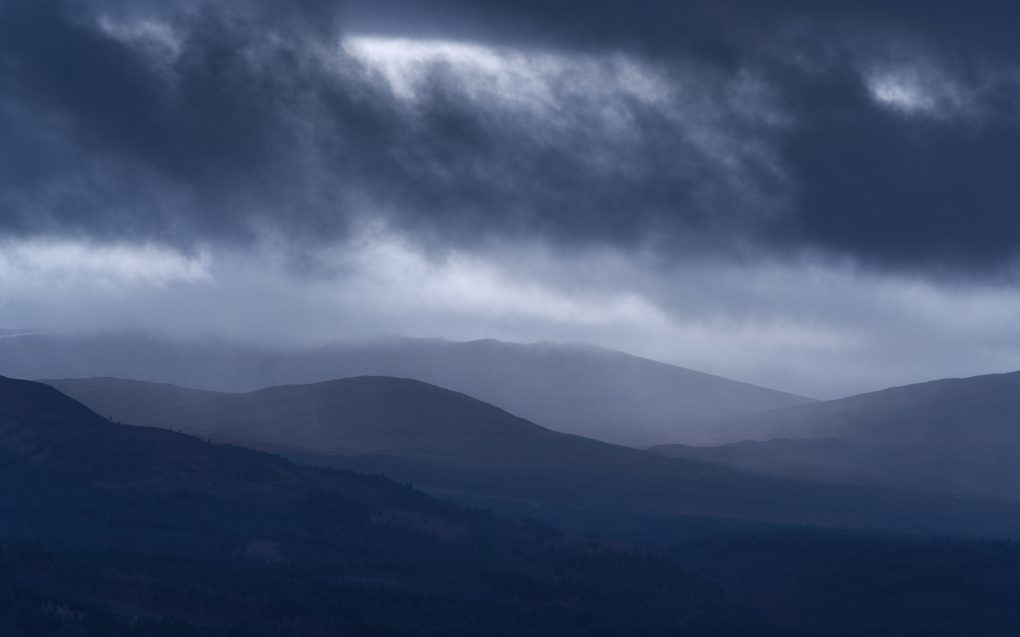
Some of my favourite landscape elements: a contrasty plasma-cloud sky and overlaping layers of mountains receding into the distance, the other side of the Black Woods of Rannoch. 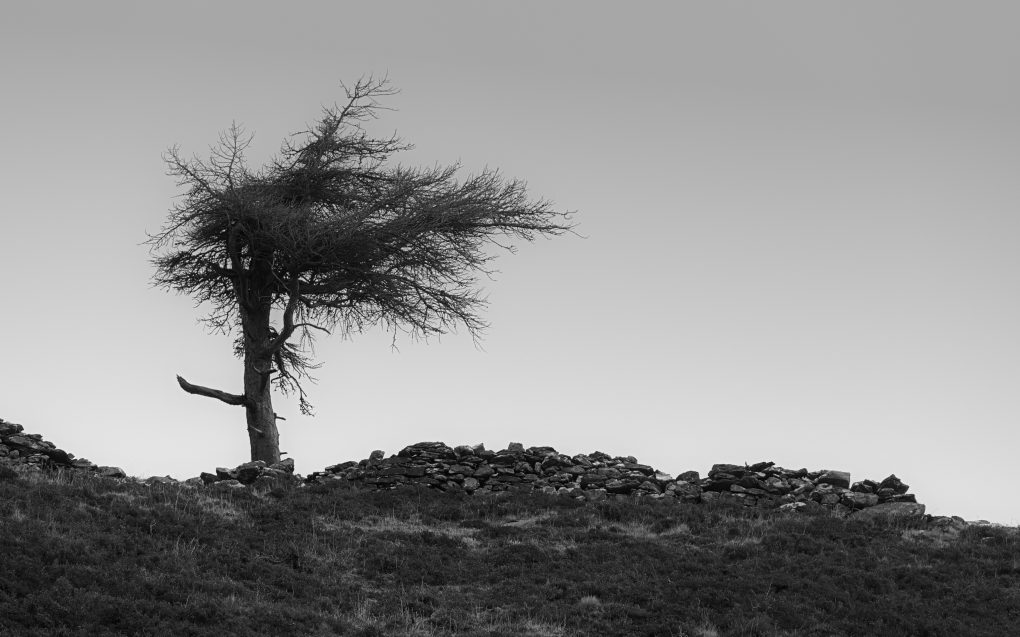
Shape and solitude: a much-windswept lone tree battling the elements at the top of Craig Varr. 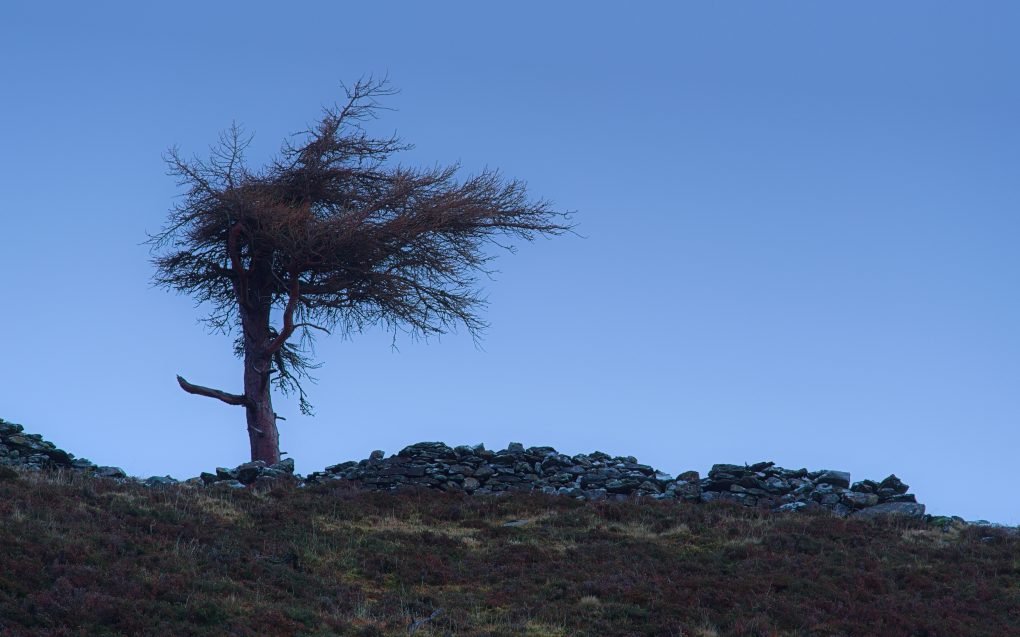
Shape and solitude: a much-windswept lone tree battling the elements at the top of Craig Varr. 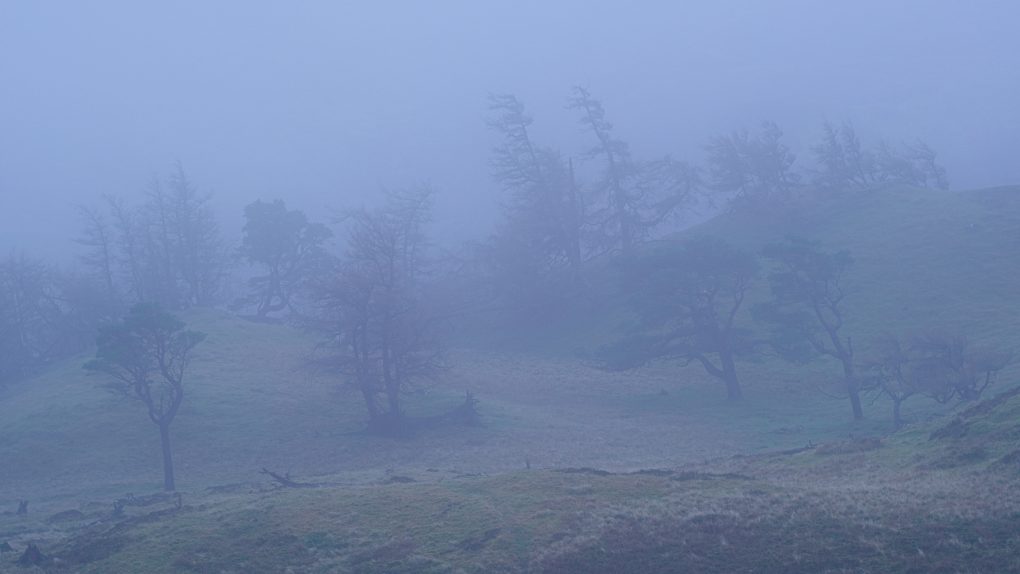
On previous visits to the location I’ve tried to replicate another photographer’s work, getting the Sleeping Giant a mile away across the river in the corner of the photo; this time, however, thick mist at the top of the crag put paid to that idea, completely eliminating anything in the distance with a visibility of about 50yd. 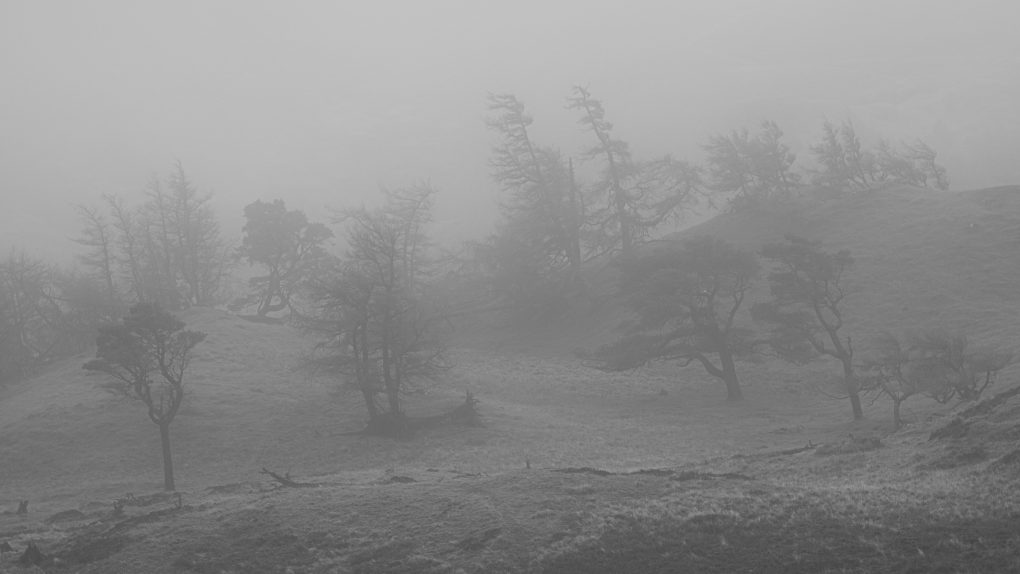
On previous visits to the location I’ve tried to replicate another photographer’s work, getting the Sleeping Giant a mile away across the river in the corner of the photo; this time, however, thick mist at the top of the crag put paid to that idea, completely eliminating anything in the distance with a visibility of about 50yd. 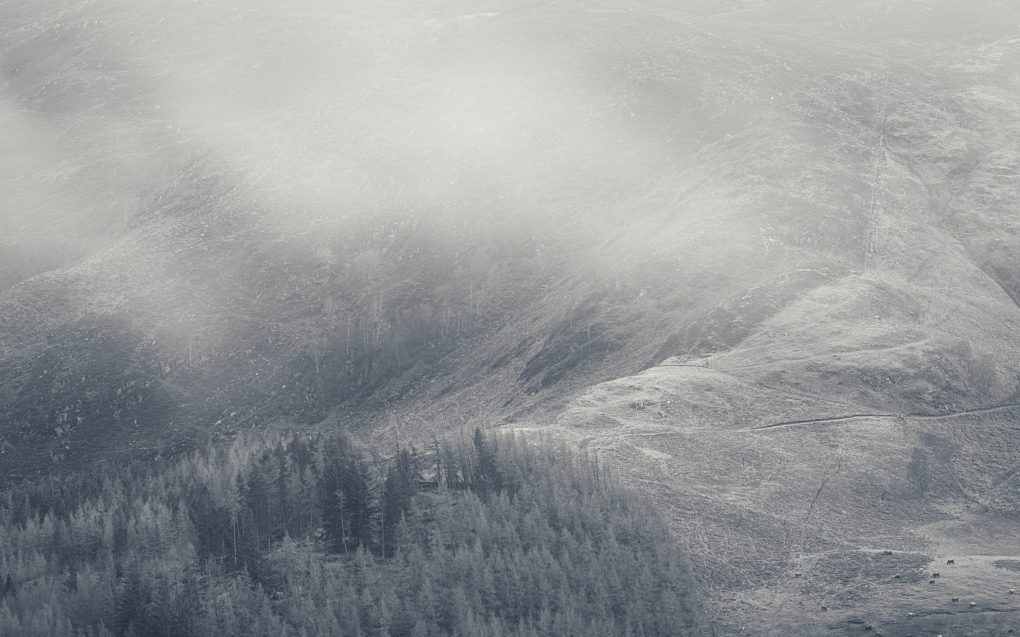
An energetic climb up Craig Varr outside Kinloch Rannoch as the mist flowed over the mountains, followed by a quick descent to return to civilisation. This was taken from the way back down, as I paused to admire the clouds flowing fast along Loch Rannoch like steam trains. 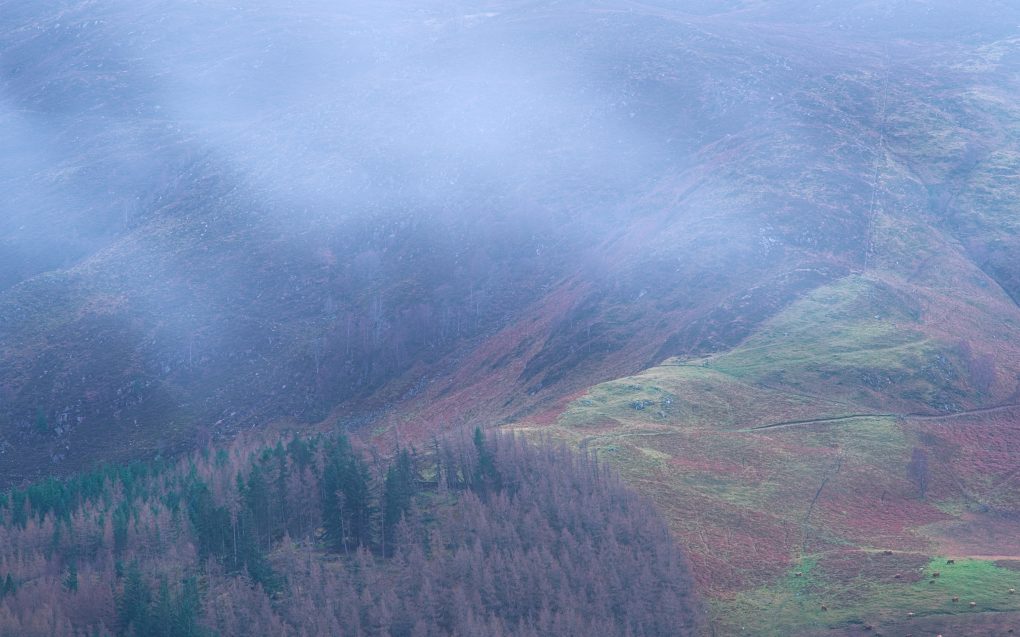
An energetic climb up Craig Varr outside Kinloch Rannoch as the mist flowed over the mountains, followed by a quick descent to return to civilisation. This was taken from the way back down, as I paused to admire the clouds flowing fast along Loch Rannoch like steam trains.
The First Morning of Winter
I spent the morning of Dec 22 – the first day of winter – up Kinnoull Hill. There was beautiful mist rising from the River Tay as it meanders through the Carse of Gowrie.
I experimented with a few new compositions too: semi-abstract views of the hills of north Fife, the motorway/A90 junction and the river north of Perth as well.
My favourite two images were the fairly conventional view from above the cliffs, looking past the folly along the Carse of Gowrie. It’s not that comfortable a location to shoot – to get a clear view of the tower, one has to stand in a gorse bush…
The Least Amount of Landscape
Just to disprove the idea of deterministic landscape photography, as I was driving back from Acharn through Grandtully along Strathtay, the sky took on a most beautiful glowing cobalt-blue colour of dusk combined with the icy diamond clarity of sub-zero late autumn temperatures in the Highlands.
One of those scenes where it took a little work to convert the camera’s recordings back to something resembling what I saw: after dark fell I couldn’t make out what was in the fields beyond the car headlights; there was nothing but horizon and the glow… and one tiny fragment of wispy cloud.
It doesn’t get much more minimalist than this…
Donner und Blitzen
Wonderful amazing weather last night. The thunderstorm started around midnight, resumed sparking silently but continuously in the distance from 2 to 3am and then restarted yet again around 8-9am with jubilant thundercracks and resounding booming rumbles echoing off the clouds.
These photos were made around 2.30am – just the distant lightning illuminating the clouds.
Epic.
Edinburgh Fog
On Sunday, on a whim, I went down to Edinburgh. As always, the city was fairly heaving but I revisited one of my favourite locations – the Radical Road along the Salisbury Crags, which affords an excellent view from Blackford Hill round to the Parliament buildings.
So I tested the Pen-F’s timelapse video ability for the first time. The camera makes it a breeze: set up the scene (lots of filters to cope with the lighting), set it in aperture-priority mode, 300 frames at 5s intervals, push the button and off it goes. And nature provided! – simply point the camera at the city and watch the sea haar roll in, great low clouds of misty fog, obscuring the castle within minutes.
First time I’ve made a 4K video… unfortunately the results from the camera weren’t quite up to the quality I expected, so I reprocessed all the RAW ORF files on the notebook in bulk (using RawTherapee) and rendered the official video myself with ffmpeg.
I also made a wide panorama – 5 frames each in 80-megapixel high resolution mode; lots of image data, nicely stitched in Hugin as usual.
Discovering SmartOS
zpool create data /dev/ada1 /dev/ada2 zfs create data/Pictures
"allow_dhcp_spoofing": "true",
"allow_ip_spoofing": "true",
"allowed_ips": [ "192.168.99.0/24" ]
[root@78-24-af-39-19-7a ~]# imgadm avail | grep centos-7 5e164fac-286d-11e4-9cf7-b3f73eefcd01 centos-7 20140820 linux 2014-08-20T13:24:52Z 553da8ba-499e-11e4-8bee-5f8dadc234ce centos-7 20141001 linux 2014-10-01T19:08:31Z 1f061f26-6aa9-11e4-941b-ff1a9c437feb centos-7 20141112 linux 2014-11-12T20:18:53Z b1df4936-7a5c-11e4-98ed-dfe1fa3a813a centos-7 20141202 linux 2014-12-02T19:52:06Z 02dbab66-a70a-11e4-819b-b3dc41b361d6 centos-7 20150128 linux 2015-01-28T16:23:36Z 3269b9fa-d22e-11e4-afcc-2b4d49a11805 centos-7 20150324 linux 2015-03-24T14:00:58Z c41bf236-dc75-11e4-88e5-038814c07c11 centos-7 20150406 linux 2015-04-06T15:58:28Z d8e65ea2-1f3e-11e5-8557-6b43e0a88b38 centos-7 20150630 linux 2015-06-30T15:44:09Z [root@78-24-af-39-19-7a ~]# imgadm import d8e65ea2-1f3e-11e5-8557-6b43e0a88b38 Importing d8e65ea2-1f3e-11e5-8557-6b43e0a88b38 (centos-7@20150630) from "https://images.joyent.com" Gather image d8e65ea2-1f3e-11e5-8557-6b43e0a88b38 ancestry Must download and install 1 image (514.3 MiB) Download 1 image [=====================================================>] 100% 514.39MB 564.58KB/s 15m32s Downloaded image d8e65ea2-1f3e-11e5-8557-6b43e0a88b38 (514.3 MiB) ...1f3e-11e5-8557-6b43e0a88b38 [=====================================================>] 100% 514.39MB 38.13MB/s 13s Imported image d8e65ea2-1f3e-11e5-8557-6b43e0a88b38 (centos-7@20150630) [root@78-24-af-39-19-7a ~]# [root@78-24-af-39-19-7a ~]# cat newbox.config { "brand": "kvm", "resolvers": [ "8.8.8.8", "8.8.4.4" ], "ram": "256", "vcpus": "2", "nics": [ { "nic_tag": "admin", "ip": "192.168.5.48", "netmask": "255.255.255.0", "gateway": "192.168.5.1", "model": "virtio", "primary": true, "allow_dhcp_spoofing": "true", "allow_ip_spoofing": "true", "allowed_ips": [ "192.168.99.0/24" ] } ], "disks": [ { "image_uuid": "d8e65ea2-1f3e-11e5-8557-6b43e0a88b38", "boot": true, "model": "virtio" } ], "customer_metadata": { "root_authorized_keys": "ssh-rsa AAAAB3NzaC1y[...]" } } [root@78-24-af-39-19-7a ~]# vmadm create -f newbox.config Successfully created VM d7b00fa6-8aa5-466b-aba4-664913e80a2e [root@78-24-af-39-19-7a ~]# ping -s 192.168.5.48 PING 192.168.5.48: 56 data bytes 64 bytes from 192.168.5.48: icmp_seq=0. time=0.377 ms 64 bytes from 192.168.5.48: icmp_seq=1. time=0.519 ms 64 bytes from 192.168.5.48: icmp_seq=2. time=0.525 ms ... zsh, basalt% ssh root@192.168.5.48 Warning: Permanently added '192.168.5.48' (ECDSA) to the list of known hosts. Last login: Mon Aug 3 16:49:24 2015 from 192.168.5.47 __ . . _| |_ | .-. . . .-. :--. |- |_ _| ;| || |(.-' | | | |__| `--' `-' `;-| `-' ' ' `-' / ; Instance (CentOS 7.1 (1503) 20150630) `-' https://docs.joyent.com/images/linux/centos [root@d7b00fa6-8aa5-466b-aba4-664913e80a2e ~]#
And there we have a new guest VM up and running in less than a minute’s effort.
Infrastructure and development environments recreated from scratch (partly thanks to storing my ~/etc/ in git) in under an hour.
I’m still looking for the perfect distributed filesystem, however…
Noctilucent Clouds
Noctilucent (“night-shining”) clouds are a rare phenomenon: the highest clouds in the atmosphere, at altitudes between 47-53 miles, consisting of tiny crystals of water ice about 100nm in diameter and requiring very cold temperatures to form. Not fully understood, they are a recently discovered meterological phenomenon with no record of their observation before 1885.
They also make a beautiful display of pale bright fibrous blue against the cobalt velvet of night…

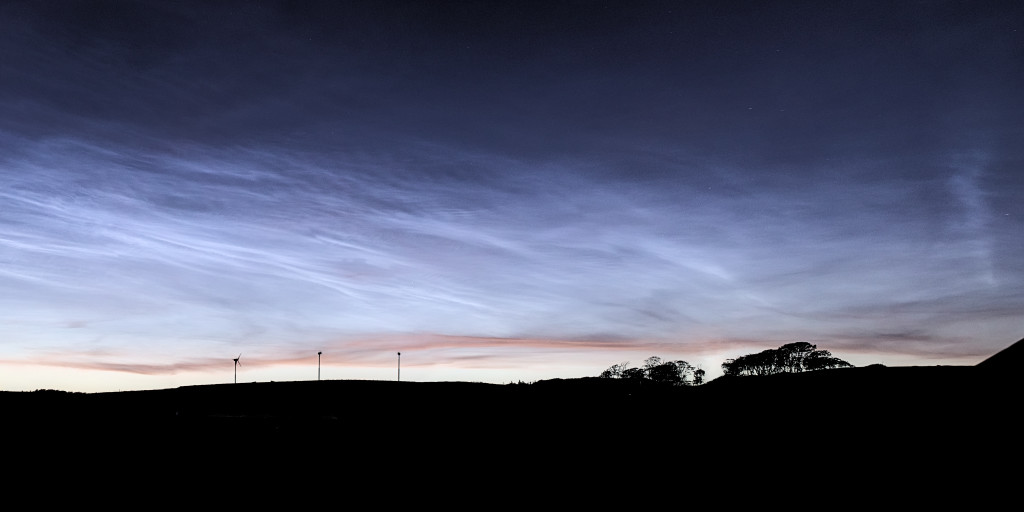
Two views, part of a stitched panorama.
Passing by
Around the harbour
Clouds
Filamentary
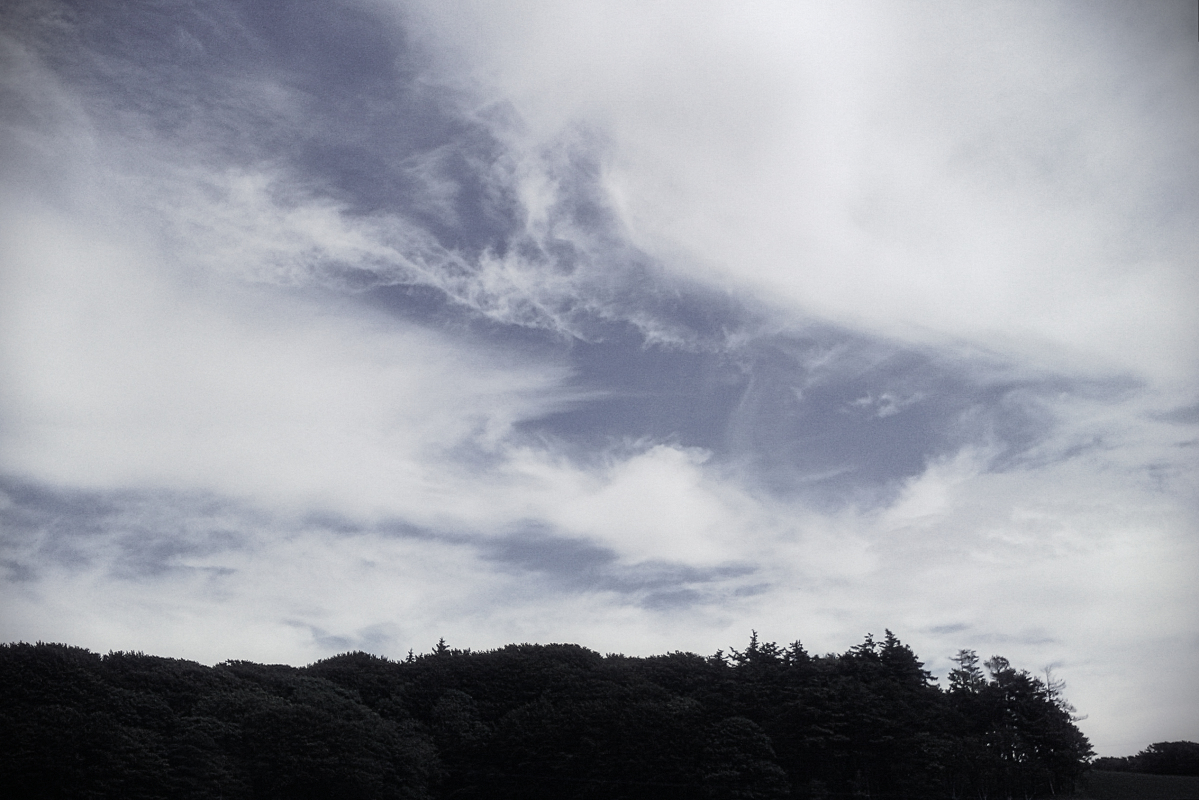
Simple cloud appreciation.
Lenticular Clouds
This particular shape of cloud normally requires mountains or hills in order to form, so I was mildly surprised to see a couple of examples of lenticular clouds near Portpatrick yesterday evening – Galloway not being noted for having any hills to speak of, least of all to the north west of here where the wind was coming from.
